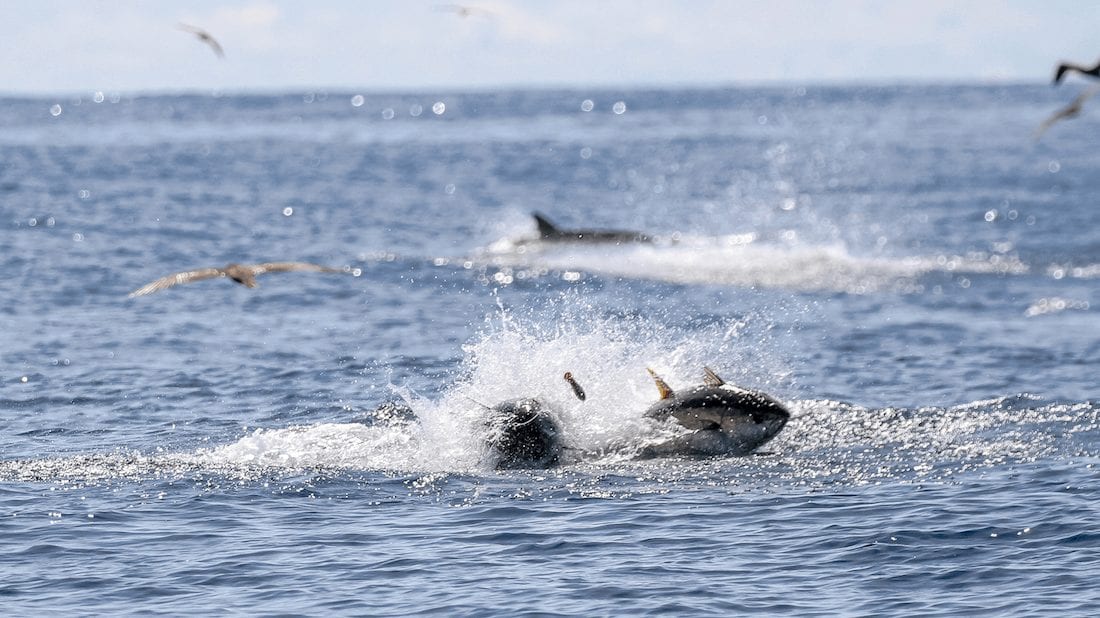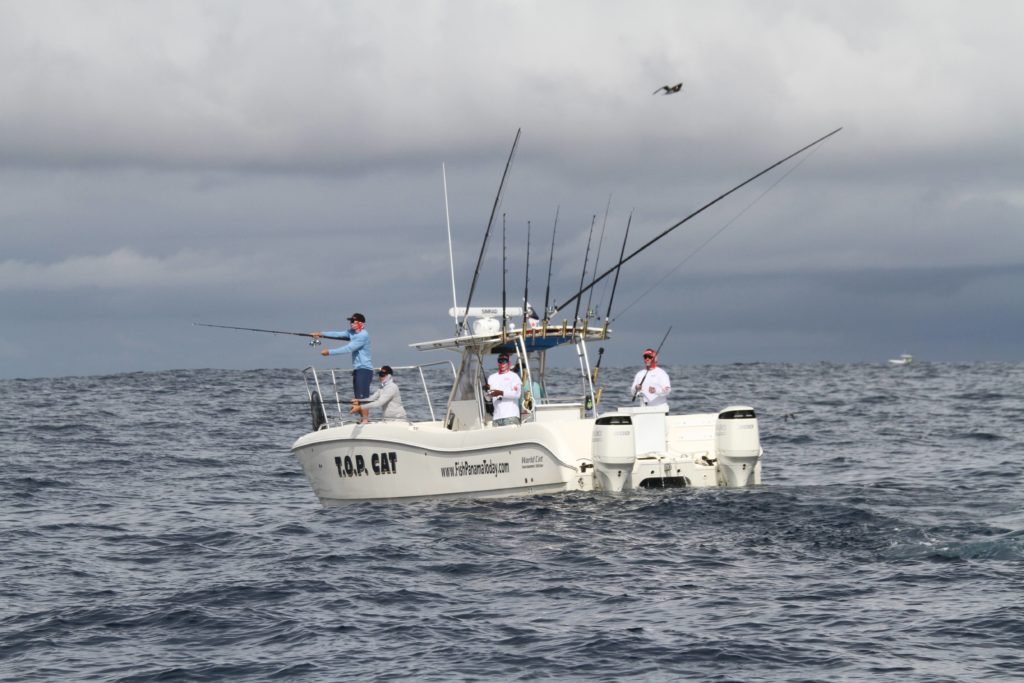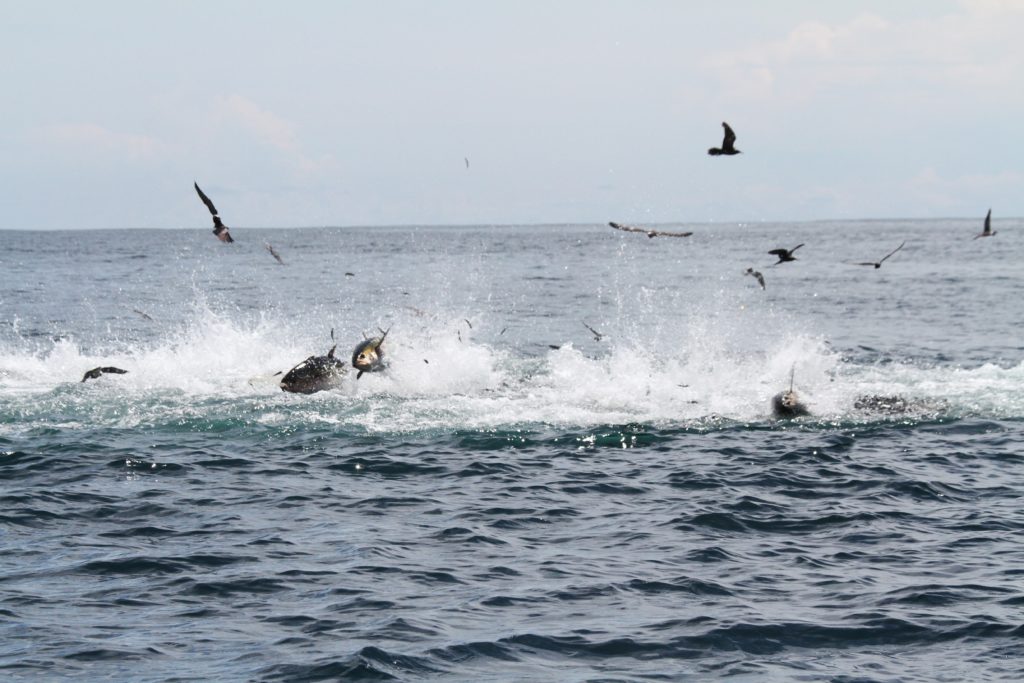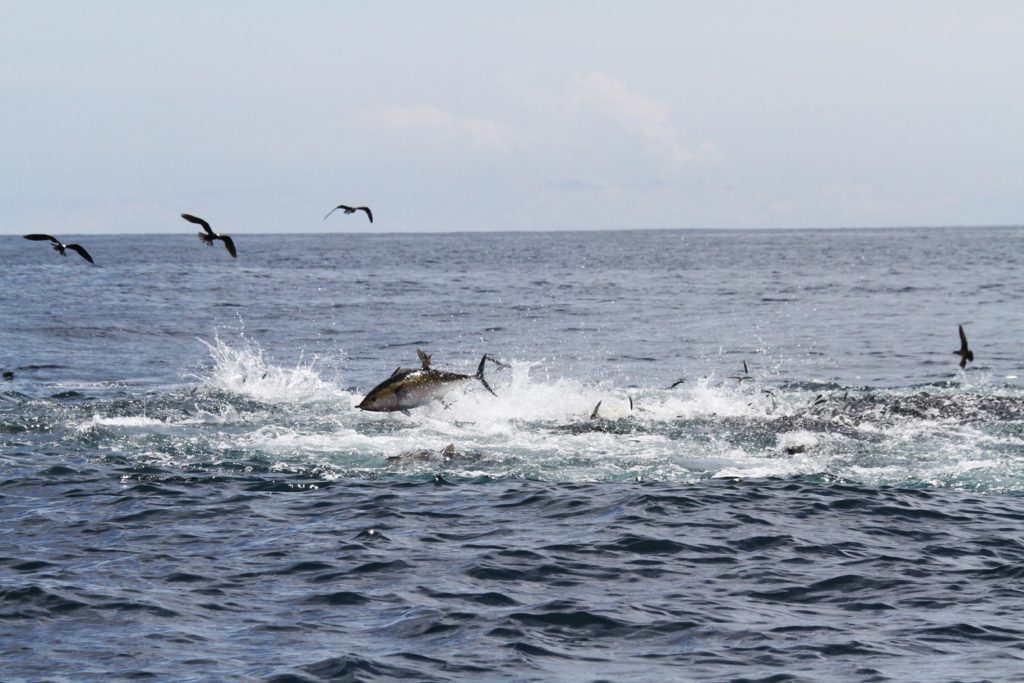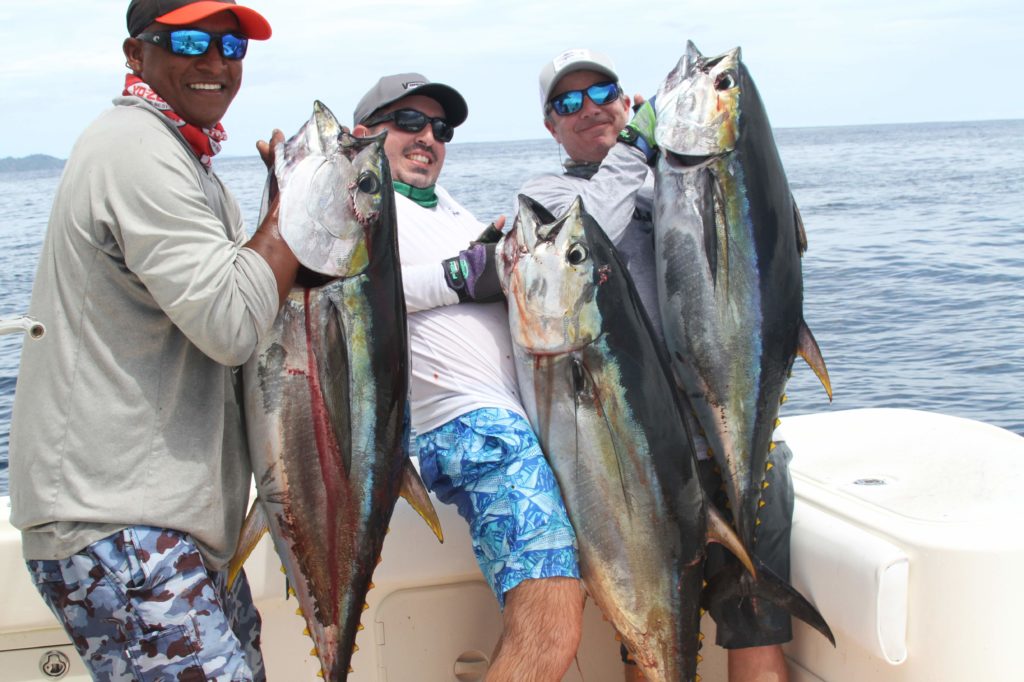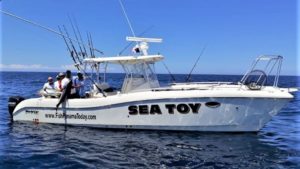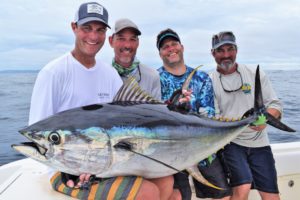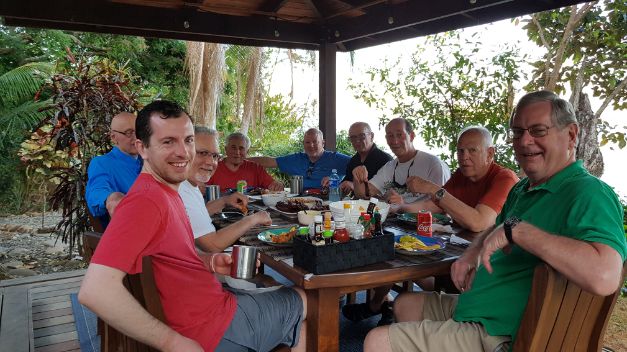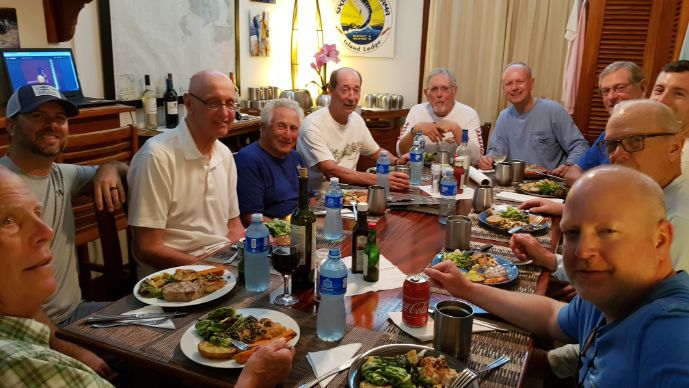So, you want to go deep sea fishing, do you?
Let’s take a look at Panama, arguably some of the best deep sea fishing in the world.
Panama was the name given to the isthmus between the Atlantic and Pacific oceans by the Spanish ‘Conquistadors’. This occurred during their conquest of silver and gold back in the 1500s. ‘Panama’ is a Guarani native Indian word traditionally said to mean “place of many fish.” Our focus on deep sea fishing will be in the Gulf of Chiriquí on the Pacific side. This is where our lodge is located.
The Gulf of Chiriquí
The Gulf of Chiriquí encompasses Coiba National Park and Golfo de Chiriquí National Park. There are dozens of islands in this gulf. Along with the Coiba National Park islands, there are also Islas Secas, Los Ladrones, Isla Parida, Isla Boca Brava, Isla Palenque, and Isla Montuosa. Montuosa is the farthest island from mainland Panama in this gulf. The Gulf of Chiriquí also includes one of the most famous deep-sea fishing areas, the Hannibal Bank, located just 13 miles east of Isla Montuosa and 20 miles west of Coiba National Park.
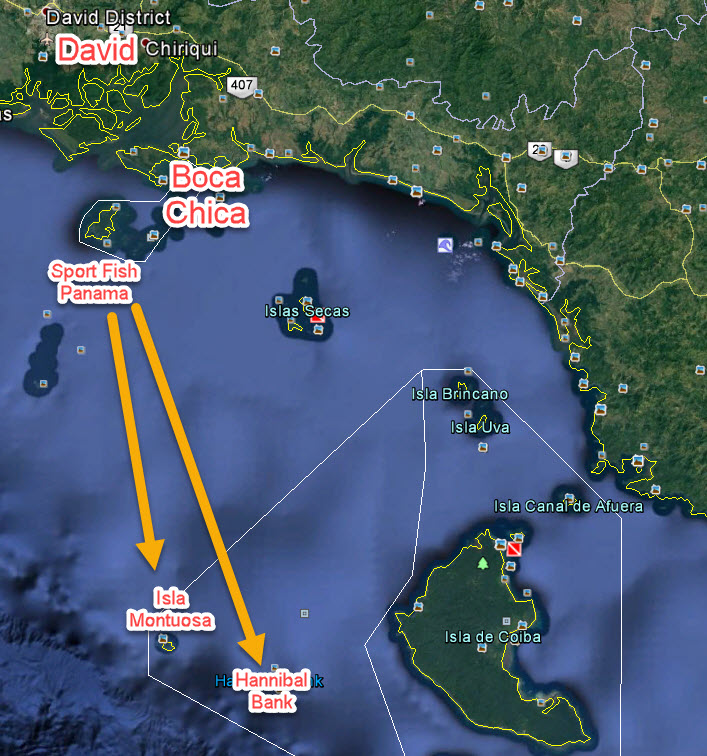
Some Specifics About Deep Sea Fishing in Panama
That covers the macro features of why deep sea fishing in Panama is different, so now on to some specifics. Take our lodge and location for starters. Our boutique lodge on Isla Parida places us closest to the Hannibal Bank and Isla Montuosa. In continuous operation for 14 years, we now have four center console boats (3 World Cat 33′ Catamarans & 1 26′ Seacraft) and a 30′ aluminum service and supply barge. With yearly facility upgrades and physical improvements, we now have three guest houses for our anglers. In addition, we have a kitchen and dining facility, crew quarters, and a newly constructed beach welcoming bar.
Now let’s talk about your deep sea fishing experience at Sport Fish Panama Island lodge. Breakfast starts at 6:00 am and expect to be aboard one of our World Cats at 7:00 for offshore departure. Being equipped with Simrad open array radar gives each of our vessels an 8-mile swath competitive advantage in locating birds on the run to Hannibal Bank or Isla Montuosa. If we find birds, there will usually be dolphins, and beneath them the tuna. Now the fun begins! High speed runs to get in front of the feeding dolphins and pitch a live bait to hopefully feeding tuna. We carry blue runners in our live wells in anticipation of finding either tuna or mahi-mahi while running. On other occasions finding the birds will locate a “tuna boil” into which we pitch live baits for instant and non-stop action.
Now onto another phase of your deep sea fishing experience.
The Sport Fish Panama Island Lodge Experience
Our dedicated and knowledgeable captains will in continuing the run locate more birds. Finding Bonita, these fill our tuna tubes for live bait trolling on arrival at Isla Montuosa or the Hannibal Bank. These locations provide variations in the surface conditions such as ripples, rips, or tide lines that may indicate changes in water temperature, salinity, clarity, or current.
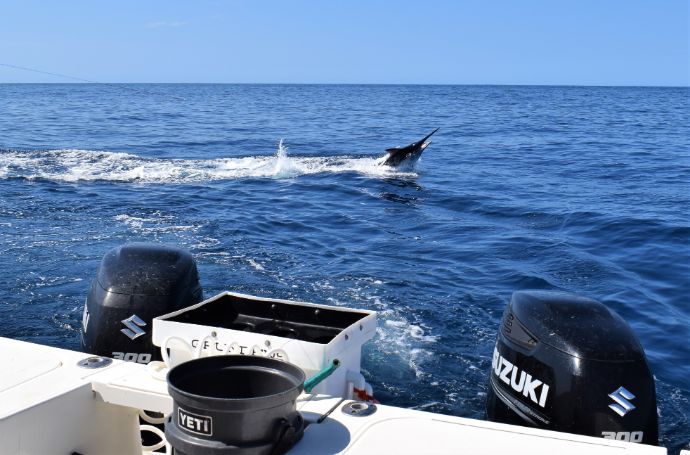
Now starts the experience of live bait slow trolling in the Northern hemisphere’s number one fishing location for Black Marlin. The Black Marlin we catch and release, weigh from 300 to 500 pounds, but we land many Blacks that are larger. Different times of the year will change our tactics and the probabilities of species caught.
January and February will bring cooler water temperatures and the arrival of large schools of yellowfin tuna. We frequently catch during these months black marlin, dorado, and pacific sailfish. March and April are great months for yellowfin tuna, with billfish showing up in waves.
May and June will have calmer seas and warming water temperatures. Pacific Sailfish or ‘Pez Vela’ become most abundant during these months and cubera snapper which, we catch year-round. July and August continue the warmer water trend, with dorado being plentiful, and wahoo appearing with increasing frequency. September into the early part of October is peak wahoo season, with billfish still around along with dorado. We typically close the last half of October and November for maintenance and repairs. December will start our season again, and the process begins for another year.
A typical day ends with returning at 5:00 for arrival cocktails and snacks at our beach bar, with dinner served at 7:00. Our trained and dedicated captains and lodge staff will make your stay at our lodge a memorable experience of deep-sea fishing in Panama.


